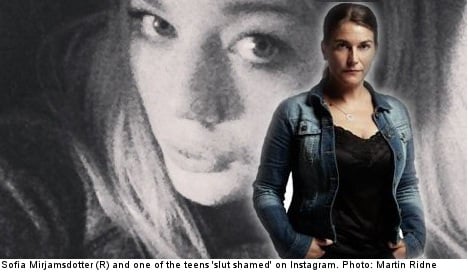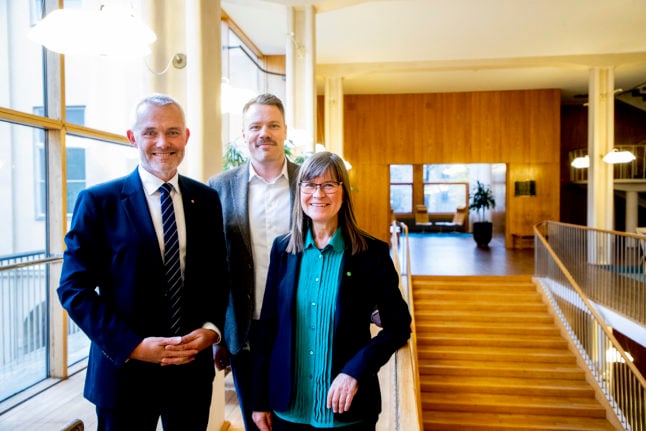When I was a teenager in the 80s, it was common to find sexist graffiti in the bathrooms at my schools. It wasn’t rare to find that someone had called a girl a whore or a slut. Or that people left comments about their appearance for all to see.
As I recall, none of the adults ever commented on these public messages left on the school walls. I can’t remember a single teacher addressing the content of the scribbles, nor discuss what they said about dignity and respect and how we treat each other.
What I did sometimes hear was a mumbled complaint about the graffiti per se, the actual act of vandalism, and whether that was acceptable.
The content, however, never came up. It didn’t matter if the pencil marks spelled out insults or cuss words, or whether they instead formed a sketched outline of a heart containing the name of a loved one.
I was reminded of all this when local Gothenburg politician Robert Hammarstrand asked, in the wake of the Instagram ‘slut shaming’ riot, if the schools in Sweden’s second biggest city ever discuss values with their pupils?
Because what happened in Gothenburg isn’t a story about Instagram. It isn’t a story about the internet. It’s the story of how people treat one another.
We’re talking about ancient social structures where a few try to gain popularity by making others feel bad.
This is a story about bullying, which existed long before the internet.
Of course, the internet plays its part. Rumours can spread in the blink of an eye with the internet, in this case setting of a demonstration that turned riotous in part. But let’s remember that the internet is not the cause, it’s a mere tool.
The internet mirrors what is going on in society at large. In a way, the internet helps us to detect, and hopefully to deal with, problems that we never acknowledged before, or that we somehow thought were beyond our control, or some sort of given.
When I was a teenage girl in the 80s, I never once thought to protest those scribbles on the bathroom wall. I never thought to question that someone had scrawled “the school’s biggest boobs” across the dining hall door, with my name written beside it.
It didn’t matter that every time I saw those words I wanted to hide, to hide my breasts.
The riot in Gothenburg is a healthy expression of teenagers refusing to accept that others have the right to name, shame, and abuse them.
Of course, we have to question how they decided to stand up and say it, but protests are in and of themselves good. In this case, they hopefully signal the start of something new.
But in order for it to be the start of something new, us adults cannot fear the internet because that is not the underlying problem – dignity and respect for your fellow human beings, that’s where the key lies.
And we must question ourselves and how we, even as adults, address each other. What signals we are sending to today’s teenagers and to our children.
We won’t achieve that by spinning into a moral panic about the big bad internet.
We need to understand what our youth get up to online but also offline.
And one more thing, and an important thing, to remember….
To turn around and point our fingers accusingly at young girls and tell them not to upload “provocative” pictures of themselves is not helpful. It is the equivalent of telling a rape victim that she has herself to blame because she wore a short skirt.
The solution is not to ask our teenagers to adapt to the rules of the games written by their abusers, the solution is to change the rules of the games by questioning the abusers’ values.
Sofia Mirjamsdotter



 Please whitelist us to continue reading.
Please whitelist us to continue reading.
Member comments